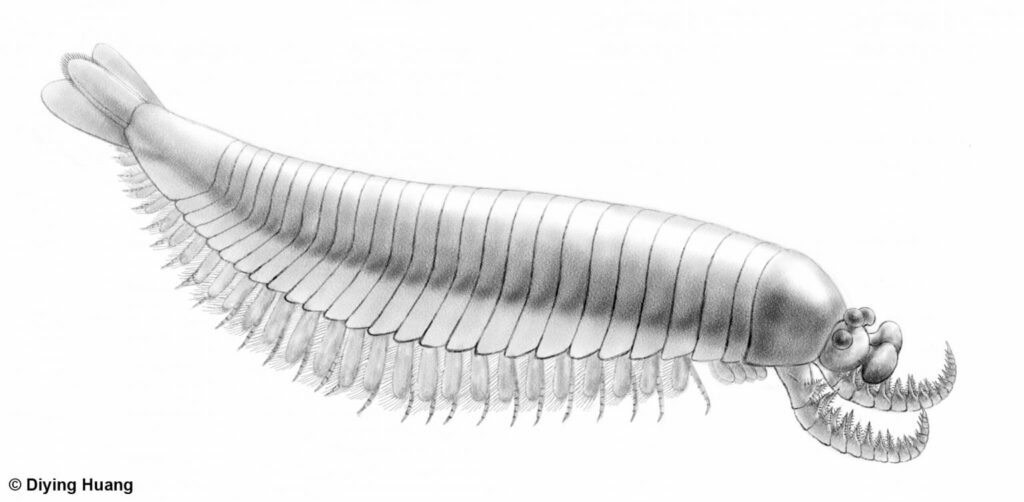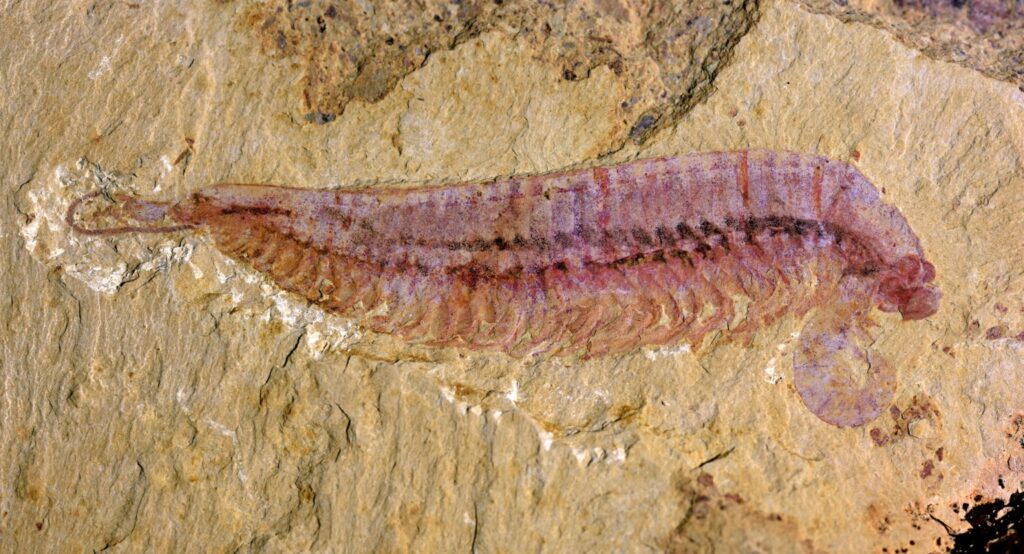A 520-Million-Year-Old Five-Eyed Fossil Reveals Arthropod Origin
Since the Cambrian Period, around 520 million years ago, arthropods have been among the most prolific animals on Earth. They are the most familiar and ubiquitous, and constitute nearly 80 per cent of all animal species today, far more than any other animals.

So how did arthropods evolve and what did they look like to their ancestors? This has been a major conundrum in animal evolution puzzling generations of scientists for more than a century.
A shrimp-like fossil with five eyes has now been found by researchers from the Nanjing Institute of Geology and Palaeontology of the Chinese Academy of Sciences (NIGPAS), giving valuable insights into the early evolutionary history of arthropods. The study was published in Nature on November 4, 2020.

The fossil species, Kylinxia, was collected from the Chengjiang fauna in southwest China’s Yunnan Province. The fauna documents the most complete early animal fossils in the Cambrian time.
Prof. HUANG Diying, the corresponding author for the study from NIGPAS, said, “Kylinxia is a very rare chimeric species. It combines morphological features from different animals, which is analogous to ‘kylin,’ a chimeric creature in traditional Chinese mythology.”
“Owing to very special taphonomic conditions, the Kylinxia fossils exhibit exquisite anatomical structures. For example, nervous tissue, eyes and digestive system — these are soft body parts we usually cannot see in conventional fossils,” said Prof. ZHAO Fangchen, co-corresponding author of the study.
Kylinxia shows distinctive features of true arthropods, such as a hardened cuticle, a segmented trunk and jointed legs.
However, it also integrates the morphological characteristics present in very ancestral forms, including the bizarre five eyes of Opabinia, known as the Cambrian “weird wonder,” as well as the iconic raptorial appendages of Anomalocaris, the giant apex predator in the Cambrian ocean.

Among the Chengjiang fauna, Anomalocaris is a top predator that can reach two meters in body length and has been regarded as an ancestral form of arthropod.
But huge morphological differences exist between Anomalocaris and true arthropods. There is a great evolutionary gap between the two that can hardly be bridged. This gap has become a crucial “missing link” in the origin of arthropods.
The research team conducted detailed anatomical examinations of the fossils of Kylinxia. They demonstrated that the first appendages in Anomalocaris and true arthropods were homologous.
The phylogenetic analyses suggested that there was an affinity between the front appendages of Kylinxia, small predatory appendages in front of the mouth of Chelicerata (a group that includes spiders and scorpions) and the antennae of Mandibulata (a subdivision of arthropods including insects such as ants and bees).
“Our results indicate that the evolutionary placement of Kylinxia is right between Anomalocaris and the true arthropods. Therefore, our finding reached the evolutionary root of the true arthropods,” said Prof. ZHU Maoyan, a co-author of the study.
“Kylinxia represents a crucial transitional fossil predicted by Darwin’s evolutionary theory. It bridges the evolutionary gap from Anomalocaris to true arthropods and forms a key “missing link” in the origin of arthropods, contributing strong fossil evidence for the evolutionary theory of life,” said Dr. ZENG Han, first author of the study.





